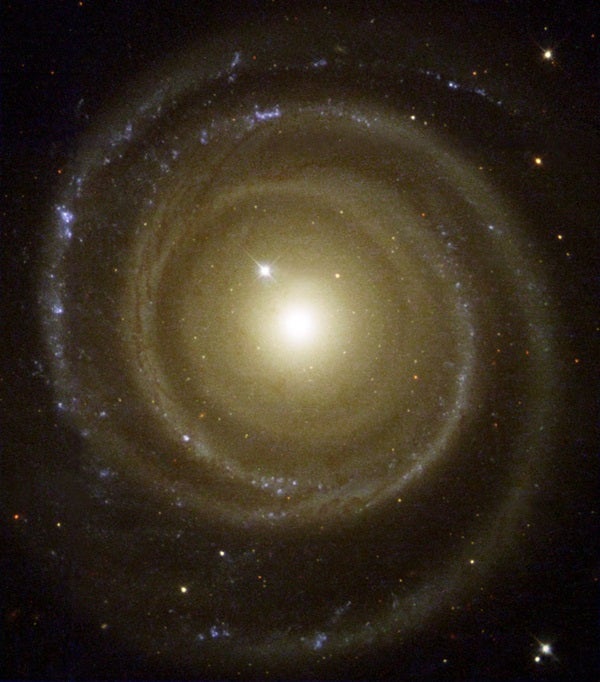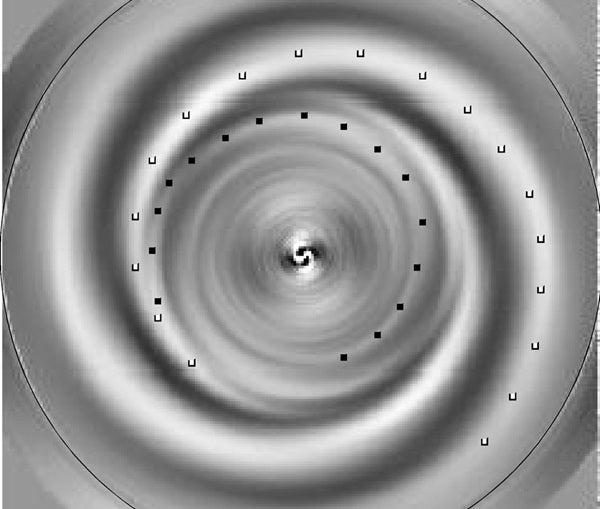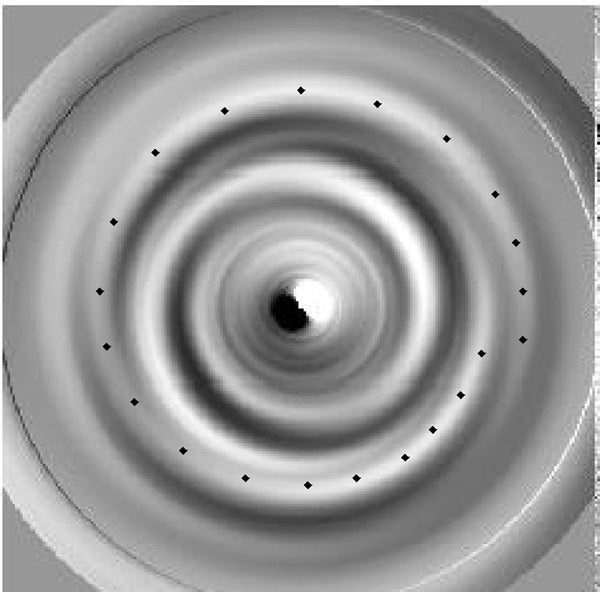Discovery of two new components within a puzzling spiral galaxy confirm it must have a pair of arms winding in the opposite direction from most galaxies, according to results presented last Tuesday to the American Astronomical Society meeting in Austin, Texas.
“While the existence of a galaxy with a pair of ‘backward’ arms may seem like an inconvenient truth to many, our latest analysis indicates it is, nonetheless, a reality,” says Gene Byrd, professor of astronomy at the University of Alabama.
The galaxy, known as NGC4622, lies 200 million light-years away in the constellation Centaurus.
Spiral arm pairs seen in galaxies are thought to trail, meaning they wind outward, opposite the direction of rotation of the disk material. Leading arms, such as the pair reported by the astronomers for NGC4622, do the opposite, opening outward in the same direction as the rotation of the galaxy’s disk.
“Contrary to conventional wisdom, with both an inner counterclockwise pair and an outer clockwise pair of spiral arms, NGC4622 must have a pair of leading arms,” Byrd says. “With two pairs of arms winding in opposite directions, one pair must lead and one pair must trail. Which way is which depends on the disk’s rotation. The outer clockwise pair must be the leading pair if the disk turns clockwise. Alternatively, the inner counterclockwise pair must be the leading pair if the disk turns counterclockwise.”
The team also discovered an outer clockwise single arm, previously hidden by the stronger outer clockwise arm pair. The galaxy also has a previously identified inner single counterclockwise arm. This confirms the galaxy must have a single leading arm. The outer clockwise arm must be the leading arm if the disk turns clockwise. The inner counterclockwise arm must be the leading single arm if the disk turns counterclockwise.
In 2002, team members first published, to great skepticism, results from a previous method that indicated the galaxy had a leading pair of spiral arms.
Other astronomers were skeptical of the 2002 announcement, in part, because the galaxy disk is only tilted about 19 degrees from face-on and because clumpy dust clouds might be concentrated on one side of the disk, creating misleading results. In response, the team’s new Fourier component method is actually assisted by the small tilt, and the effects of dust are not used in the latest analysis.
“Two independent methods now indicate that NGC4622’s arms do indeed behave in a very unusual fashion, with the outer arms winding outward in the same direction the galaxy turns,” says Byrd.
Further studies of the origin of this behavior are needed, the researchers said. The Hubble Space Telescope image reveals a dark dust lane in the center which suggests the galaxy may have consumed a smaller companion galaxy, the researchers said.












